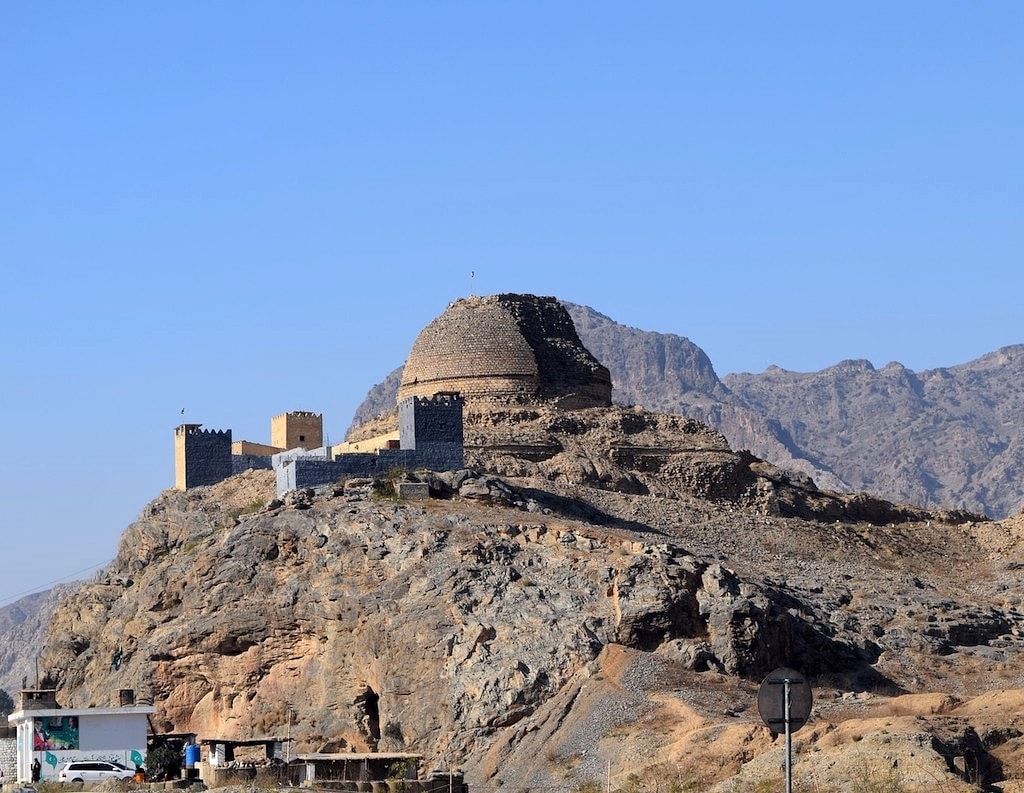The Sphola Stupa, also known as the Sphola-Cho Stupa, is a significant archaeological site located in the Swat Valley of Pakistan’s Khyber Pakhtunkhwa province. This ancient Buddhist stupa stands as a testament to the region’s rich cultural and religious heritage, dating back to the Gandhara civilization of the 2nd century BCE to the 11th century CE.
The Swat Valley, renowned for its stunning natural beauty and rich history, was once a thriving center of Buddhist civilization during the time of the Gandhara Kingdom. The valley was home to numerous monasteries, stupas, and other religious structures, which flourished under the patronage of local rulers and foreign merchants traveling along the Silk Road.
The Sphola Stupa, situated near the village of Sphola in the Swat Valley, is believed to have been constructed during the Gandhara period, making it over two millennia old. The stupa is part of a larger complex that includes ancient monastic cells, meditation halls, and other structures, attesting to the site’s significance as a religious center.
The Sphola Stupa is notable for its architectural style, which reflects the influence of both Indian and Greco-Roman artistic traditions. The stupa is built in the classic Gandhara style, characterized by its elaborate carvings, intricate sculptures, and use of stone masonry. The exterior of the stupa is adorned with bas-reliefs depicting scenes from the life of the Buddha, as well as mythical creatures, floral motifs, and intricate geometric patterns.
The Sphola Stupa served as a place of worship and pilgrimage for Buddhist monks and followers, who would visit the site to pay their respects, offer prayers, and engage in meditation. The stupa also played a central role in religious ceremonies and rituals, serving as a focal point for the dissemination of Buddhist teachings and practices throughout the region.
Over the centuries, the Swat Valley witnessed a succession of invasions, conquests, and cultural shifts, which led to the decline of Buddhism and the rise of Islam in the region. Many Buddhist sites, including the Sphola Stupa, fell into disrepair and were gradually abandoned, eventually becoming buried beneath layers of earth and vegetation.
In recent decades, efforts have been made to preserve and restore the Sphola Stupa and other archaeological sites in the Swat Valley. Archaeological excavations have uncovered valuable artifacts and insights into the region’s ancient past, shedding light on the vibrant cultural heritage of Gandhara civilization.
Today, the Sphola Stupa stands as a silent witness to the passage of time, a testament to the enduring legacy of Buddhism in the Swat Valley. Visitors to the site can explore its ancient ruins, marvel at its intricate carvings, and contemplate the spiritual significance of this sacred place. As a symbol of cultural heritage and religious devotion, the Sphola Stupa continues to inspire awe and reverence among visitors from around the world.



